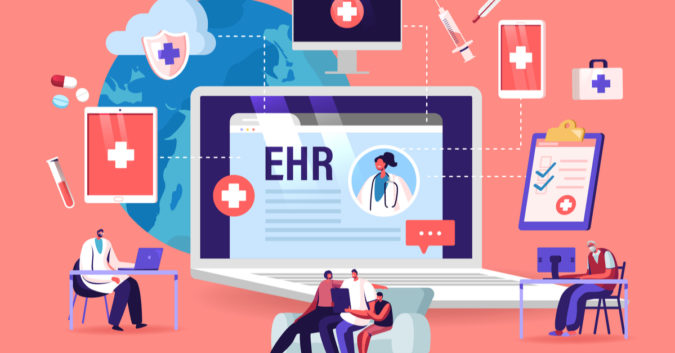What happens when someone receives the wrong drug?
Or, when someone is unknowingly prescribed a drug that may have adverse effects when added to another drug they’re already taking? Researchers at the University of Utah Health, Harvard University, and the Brigham and Women's Hospital in Boston set out to find answers to these questions in a recent study.
Interactions between multiple drugs can drastically alter the effects of a given medication — sometimes in a way that proves fatal. Often, unique health conditions only heighten the risk of a bad dose or a wrongly prescribed medication turning deadly.
Sadly, these kinds of mistakes are far more common than one may think — in fact, they result in thousands of American deaths each year.
In the 1990s, doctors and other medical professionals began using electronic health records (EHRs) to provide warnings if certain medications pose a health risk to patients, such as allergic reactions, adverse side effects, or improper doses.
These systems, however, are far from foolproof, and a new study suggests they fail to detect potentially lethal errors in nearly 1 of every 3 patients.
Simulating Scenarios
By analyzing the EHR performance of more than 2,000 hospitals in the U.S., researchers were able to conclude that EHRs miss more than 30% of medical errors.
To arrive at that staggering figure, the researchers simulated harmful scenarios of drug interactions based on actual medical cases that resulted in patient injury or death.
For example, one scenario involved a middle-aged woman who was admitted to a hospital with pneumonia. She was given a blood-thinning medication that the EHR system failed to detect was already a part of her drug regimen to treat deep vein thrombosis. The resulting excessive dose killed the patient.
Using computers to simulate more than 8,600 such incidents, researchers then tested how often and to what degree EHRs were able to detect the mistakes. They found the systems missed errors nearly 1 out of 3 times.
How Much Failure Should Be Tolerated?
The study had one silver lining: While EHRs failed to detect an alarmingly high number of simulated medical errors, the rate of successful detections improved over the 10-year study period. Specifically, the report found warnings of potential medication problems increased from 54 percent in 2009 to 66 percent in 2018.
“EHRs are supposed to ensure safe use of medications in hospitals,” said study author David C. Classen, a professor of internal medicine at the University of Utah Health. “But they’re not doing that. In any other industry, this degree of software failure wouldn’t be tolerated.”
Classen went on to compare the tolerance of such failure to other industries. “You would never get on an airplane,” he said, “if an airline could only promise it could get you to your destination safely two-thirds of the time.”
System Upgrade Needed
How could such a widely used system fail so often?
According to Classen, part of the problem is that hospitals don’t often update their EMR software. Where one medical facility may detect a problem, another may not, due to its running an older version of the software.
These systems are meant to constantly evolve, adapting to and incorporating the latest research on drug safety. Moreover, healthcare regulators only assess EHR systems for their original factory specifications — not whatever updates or alterations have been installed since.
"Although EHRs are now widely used, their safety performance continues to vary from hospital to hospital,” said study co-author David W. Bates, M.D., of Brigham and Women's Hospital. “Hospitals decide what drug-related decision supports to turn on within their systems. They have a great deal of latitude around this.”
Medical error is one of the leading causes of death in the United States, responsible for an estimated 250,000 unnecessary American deaths every year.
With such an astonishing amount of suffering attributable to mere mistakes, it seems even less tolerable that the systems designed to curb those errors are so hit-or-miss.
